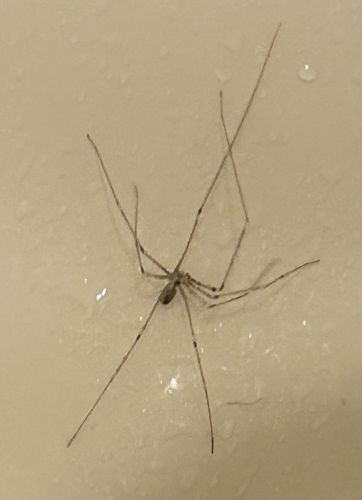Cellar Spider, Daddy Long-legs Spider
Scientific Name: Pholcus phalangioides (most common species)
Order & Family: Order Araneae, Family Pholcidae
Size: Body length typically 2-10 mm, but their legs can span up to 5-7 cm or more, making them appear much larger.

Natural Habitat
Commonly found in damp, dark, and undisturbed areas such as cellars, basements, crawl spaces, sheds, garages, and often in corners of rooms indoors.
Diet & Feeding
Mainly other insects and spiders. They are known to prey on common household pests like flies, mosquitoes, and even other spiders, including venomous ones like black widows.
Behavior Patterns
Cellar spiders are known for their rapid, vibrating movement when disturbed, which makes them appear blurry to predators. They build irregular, messy webs in corners and undisturbed areas. They are generally not aggressive towards humans.
Risks & Benefits
Cellar spiders are generally harmless to humans. Their fangs are too small to penetrate human skin effectively, and their venom is not considered medically significant. They are beneficial as natural pest control, preying on other insects and spiders in the home. There is a common urban legend that they are extremely venomous but cannot bite humans, which is false.
Identified on: 8/19/2025